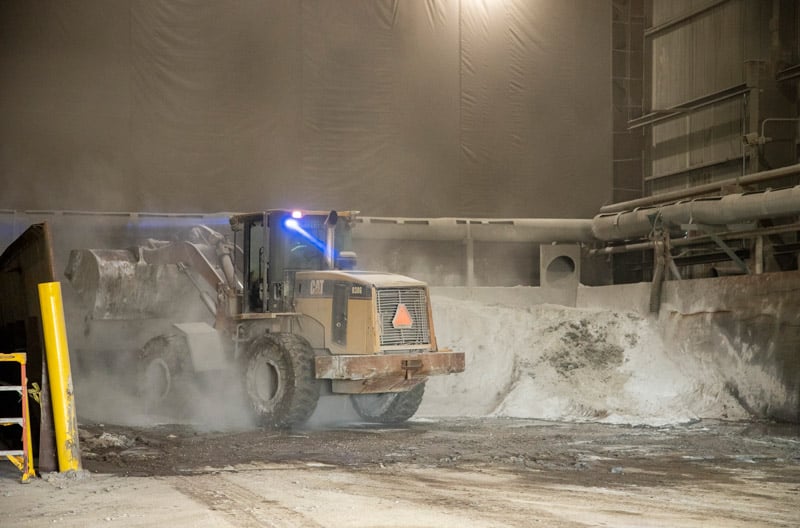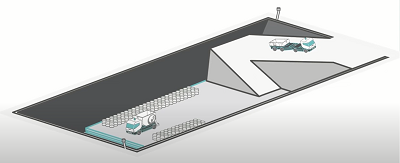Landfills are one of the oldest and most common forms of waste disposal. They are used for storing and consolidating waste, as well as for sorting, treating, and recycling byproducts and other materials. Over the years, many different types of waste have been added to landfills, including hazardous materials.
One often asked question is whether it is safe to dispose of hazardous materials in landfills. Before we answer that question, let’s look at how and why landfills have been used in the past.
Filling the land: a history of landfills
Landfills have existed for thousands of years and have served two primary purposes. The first was to spare early cities from the stench and potential dangers of having waste pile up within their walls. The second also describes the origin of the term “landfill” perfectly. Ravines and depressions had more value to cities, businesses, and farmers if they could be converted to flat land. For that purpose, waste of all types was thrown into these depressions to level the land and make it better suited for development.
As resources, products, and production processes have become more complex, so have their byproducts. More and more hazardous materials were added to landfills, which eventually led to superfund sites — polluted locations requiring a long term response to clean up hazardous contamination.
Preventing superfund sites
By the 1970s, highly contaminated sites received widespread public attention, and it became necessary to deal with landfills and the hazardous waste they contained in more environmentally friendly ways. The Resource Conservation and Recovery Act (RCRA) of 1976 was passed to address the environmental issues that had developed as a result of indiscriminate dumping. This landmark environmental law defined hazardous chemicals and related wastes based on their composition, and it directed safe management of those wastes under Subtitle C. (Later, the Comprehensive Environmental Response, Compensation and Liability Act, “Superfund,” was established to pay for remediation of the most contaminated sites.)
Hazardous waste landfills are carefully designed using the best civil and environmental engineering methods possible. All RCRA Subtitle C landfills must pass local, state, and EPA regional permitting processes. Once approved, the design incorporates two synthetic liners made of high density polyethylene (HDPE) and two compacted clay liners.
One of the principal dangers of hazardous waste landfills is groundwater contamination caused by leachate. Leachate is the liquid that forms when rain comes into contact with the waste and collects at the bottom of the landfill. Subtitle C landfills use a leachate collection system to pump this waste from the active cell and detection systems between the liners and under the liner at the very bottom to send alerts if any leachate is leaking from the landfill.
While landfilling is the least favored waste treatment method in the waste hierarchy, there are many wastes for which landfilling is the only appropriate management method.

EPA landfill waste treatment standards
To reduce the chance of environmental harm and increase the safety of landfills, the EPA established treatment standards that waste must meet before it can be deposited in a landfill. Some waste meets the standards without requiring treatment prior to disposal in a landfill, while other waste needs treatment prior to deposit into a landfill
Landfill waste treatment methods
The most common form of treatment for hazardous waste is called stabilization and refers to processes that produce chemical reactions in order to reduce the leachability of the stabilized waste. By taking a sample of the waste, the correct reagent can be identified, and the amount required to stabilize the hazardous materials in the waste is determined.
Macroencapsulation and microencapsulation are additional methods of treating waste for landfills. They include physical and/or chemical processes in which the hazardous contaminants are prevented from leaching into the surrounding environment.
- Microencapsulation involves physical sizing and mixing with chemical reagents to encapsulate or coat the debris, thereby binding the contaminants in place.
- Macroencapsulation requires physical sizing to fit the encapsulation vessel. Generally, the debris is entombed in a chemical matrix within a sealed macroencapsulation vessel.
Landfills offer safe, permanent solutions
Disposing of hazardous waste in landfills can be accomplished effectively and with minimal chance of environmental harm as long as the proper precautions are taken. The industry operates over 15 landfills in the United States and customizes stabilization or encapsulation pretreatment to your specific hazardous waste, preventing the possibility of migration or leaching in the future.


